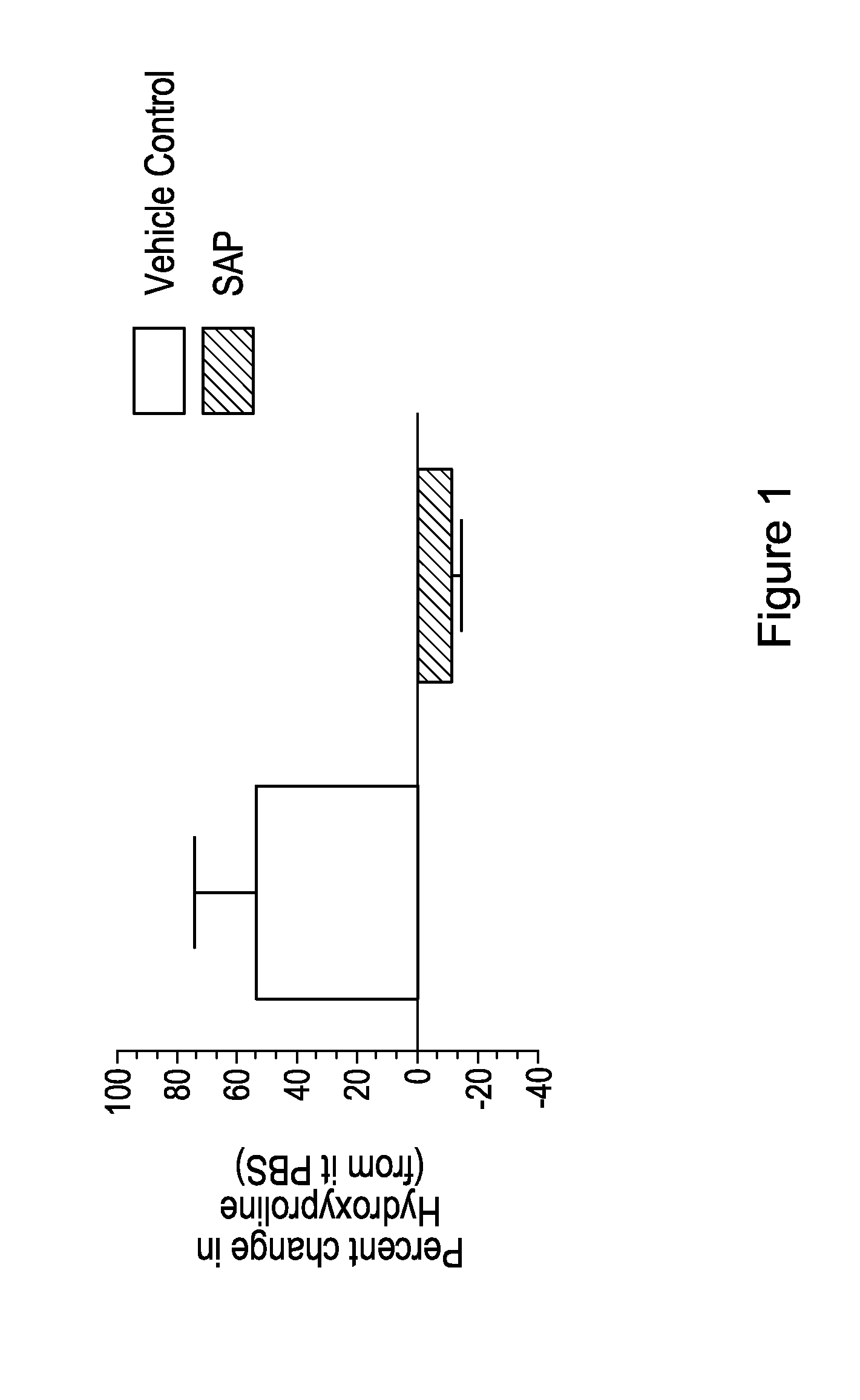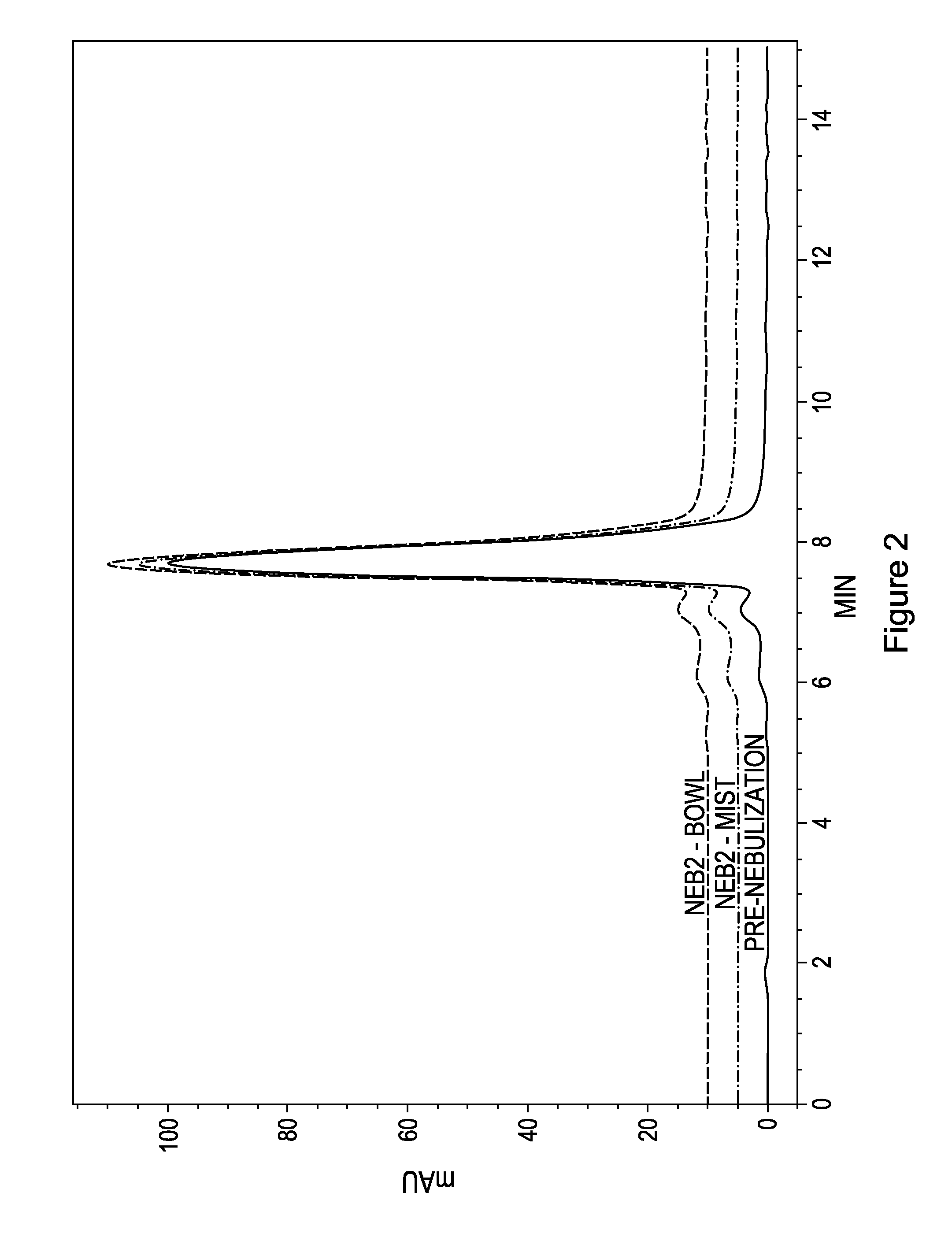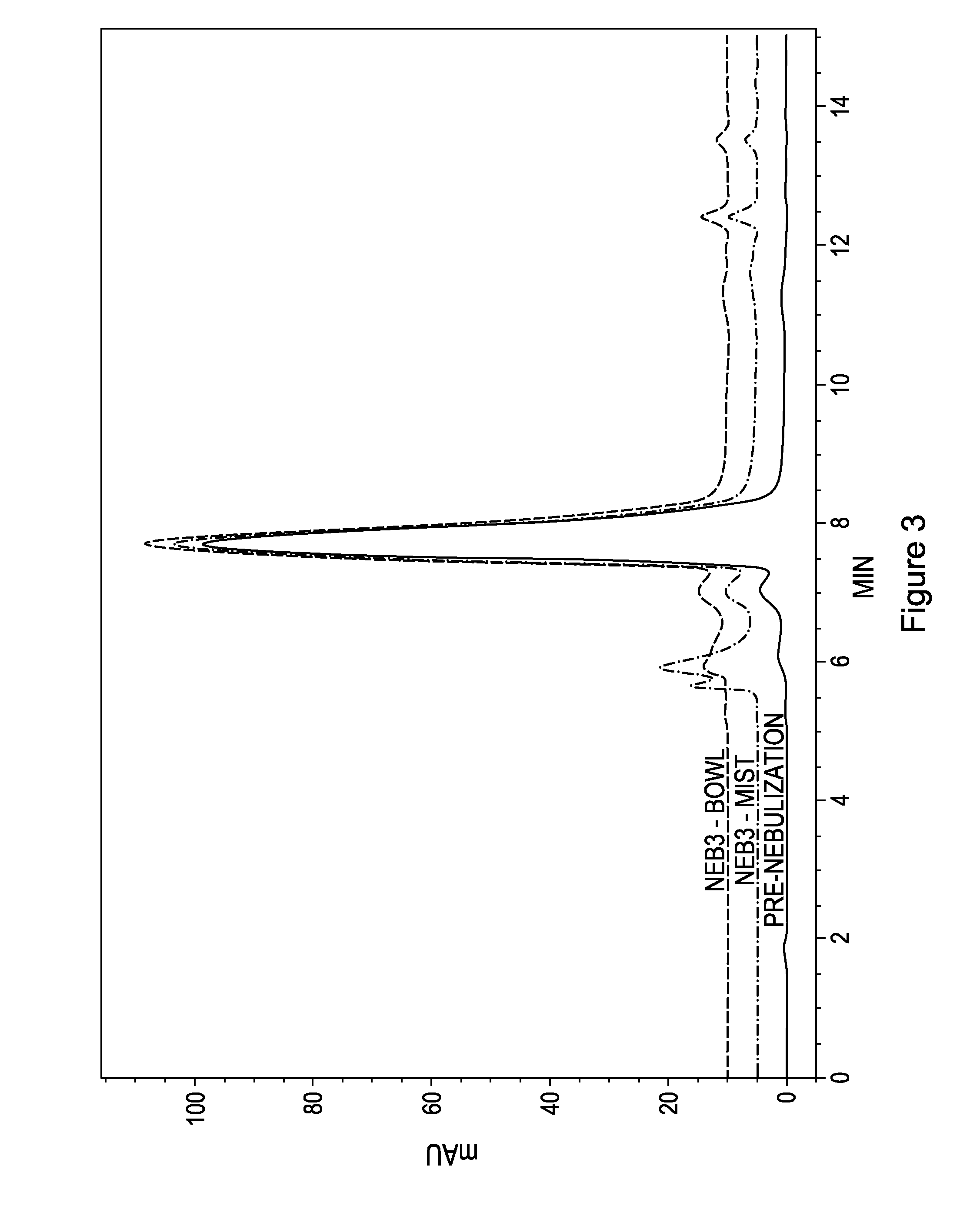Pulmonary and nasal delivery of serum amyloid p
a technology of amyloid p and amyloid, which is applied in the direction of drug compositions, peptide/protein ingredients, immunological disorders, etc., can solve the problems of reduced lung oxygen transfer ability into the bloodstream, patient debility, respiratory failure and eventually death, and progressive loss of lung function over tim
- Summary
- Abstract
- Description
- Claims
- Application Information
AI Technical Summary
Benefits of technology
Problems solved by technology
Method used
Image
Examples
example 1
Intranasal Delivery of SAP
[0090]Pulmonary fibrosis was produced in male C57Bl / 6 mice. An intratracheal dose (via transoral route) of 0.03 U of bleomycin was administered on Day 0. On study Days 11, 13, 15, 17 and 19 mice in the treated group are dosed intranasally with 8 mg / kg of hSAP (recombinantly produced human SAP) in buffer (10 mM sodium phosphate, 5% sorbitol, pH 7.5). Untreated mice were dosed with buffer. On Day 21 the animals were sacrificed, and total lung collagen was measured using a hydroxyproline assay as described previously (Trujillo et al. Am J Pathol. 2008 172(5):1209-21). Briefly, lung homogenate were incubated with 6 N HCl for 8 hours at 120° C. Following which, citrate / acetate buffer (5% citric acid, 7.2% sodium acetate, 3.4% sodium hydroxide, and 1.2% glacial acetic acid, pH 6.0) and chloramine-T solution (282 mg chloramine-T, 2 ml of n-propanol, 2 ml of distilled water, and 16 ml of citrate / acetate buffer) were added to each digested lung sample. The resulting...
example 2
Detection of hSAP in the Systemic Circulation Following Intranasal hSAP Delivery
[0091]C57Bl / 6 mice received 100 μl of 20 mg / ml hSAP intranasally and were sacrificed either 6 hours or 24 hours after dosing. A cardiac puncture was performed and resultant plasma analyzed for hSAP levels by ELISA. Lungs were either perfused in situ with PBS via the left ventricle, or not perfused and the lungs then removed en bloc. Tissue was homogenized and hSAP levels measured by ELISA. Table 1 demonstrates the results from the ELISA assays. At both the 6 hour and 24 hour post-intranasal dosing time points, greater levels of hSAP are detected in the lung over plasma.
TABLE 1Sample NumberSample TypehSAP LevelsMouse Treatment Description08-036, #1Mouse Plasma0.054 ug / ml24 hr post-intranasal dosing08-036, #2Mouse PlasmaBLQ*24 hr post-intranasal dosing08-036, #3Mouse Plasma0.028 ug / ml24 hr post-intranasal dosing08-036, #7Mouse PlasmaBLQ*24 hr post-intranasal dosing08-036, #8Mouse Plasma0.034 ug / ml24 hr pos...
example 3
Aerosolization of hSAP
[0092]Recombinant human SAP was aerosolized under three different conditions using a DeVilbiss model 3655D nebulizer, see Table 2. Three mL of each sample were introduced into the nebulizer bowl and nebulized for 10 minutes, while the generated aerosol was collected in a 50 mL tube on ice under slight vacuum. Samples of the recovered aerosol (“Recovered”) and of the remainder of the hSAP solution in the nebulizer chamber (“Remainder”) were analyzed by SE-HPLC (size-exclusion high-performance liquid chromatography) and UV absorption to assess the product aggregate content and concentration, respectively. Results are shown in Table 3 and FIGS. 2-4.
TABLE 2Samplemg / ml of hSAPBuffer#12010 mM sodium phosphate, 5% sorbitol, pH 7.5#2110 mM sodium phosphate, 5% sorbitol, pH 7.5#310.9% NaCl
TABLE 3UV Concentration ResultsSampleTotal[hSAP]VolumehSAPPercentageSample(mg / mL)(mL)(mg)of feed#1 Recovered11.41.251422%#1 Remainder22.10.551219%#2 Recovered0.71.000.723%#2 Remainder1...
PUM
| Property | Measurement | Unit |
|---|---|---|
| mass median aerodynamic diameter | aaaaa | aaaaa |
| mass median diameter | aaaaa | aaaaa |
| mass median aerodynamic diameter | aaaaa | aaaaa |
Abstract
Description
Claims
Application Information
 Login to View More
Login to View More - R&D
- Intellectual Property
- Life Sciences
- Materials
- Tech Scout
- Unparalleled Data Quality
- Higher Quality Content
- 60% Fewer Hallucinations
Browse by: Latest US Patents, China's latest patents, Technical Efficacy Thesaurus, Application Domain, Technology Topic, Popular Technical Reports.
© 2025 PatSnap. All rights reserved.Legal|Privacy policy|Modern Slavery Act Transparency Statement|Sitemap|About US| Contact US: help@patsnap.com



